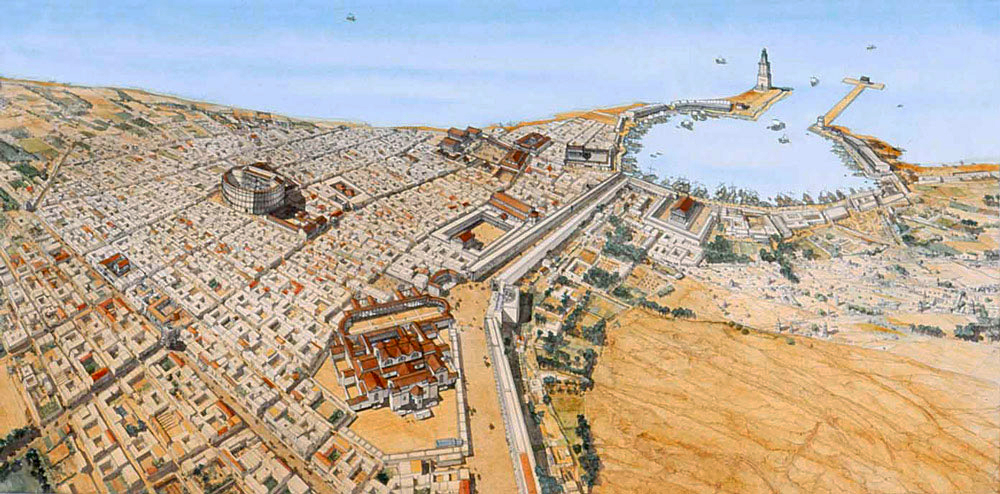
Report by Ahmed Fergiani
The magnificent city of Leptis Magna is an immensely satisfying, wonderful place to see, and one of the most sought tourist destinations in Libya. It is also the most important Roman site outside Italy, as it is widely recognised as the best preserved Roman city outside Italy, and, unlike most ancient ruins, its well-preserved remains give a clear picture of how a complete Roman city must have looked like.
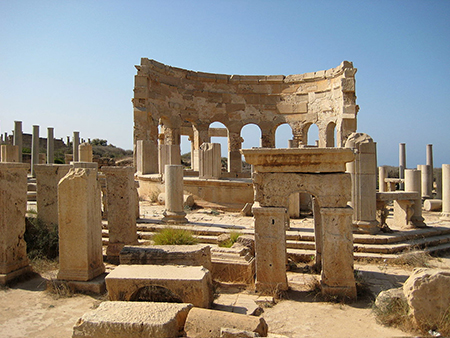
The city was founded in the second half of the 7th century BC by the Phoenicians and became a Greek city later on. Under the Roman theatre a 4th to 3rd century BC necropolis was found. After the end of the Third Punic War in 146 BC it became part of the Roman Republic, although from about 111 BC onward it was for all intents and purposes an independent city.
After Rome had become the new power of the Mediterranean, Leptis, now classified as Civitas libera et immunis (free community and free of paying tax), flourished as a commercial hub and potential supplier of olive oil, precious metals, grain, wild animals and slaves to Rome. The city depended primarily on the fertility of its surrounding farmland, where many olive-presses have been excavated. As early as 46 BC its olive oil production was of such an extent that the city was levied by Caesar with a tax of three million pounds of oil annually 4. The Roman Republic sent some colonists together with a small garrison in order to control the city. Since then the city started to grow and was even allowed to strike its own coins. Soon Italic merchants settled in the city and started a profitable commerce with the Libyan interior 5.
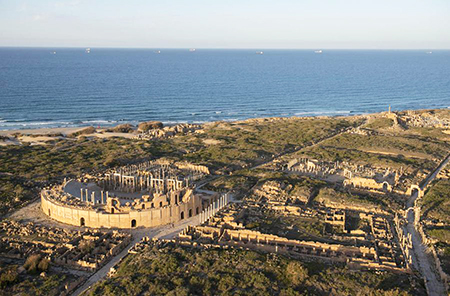
Leptis Magna remained as such until the reign of the Roman emperor Tiberius, when the city and the surrounding area were formally incorporated into the empire as part of the province of Africa. It soon became one of the leading cities of Roman Africa and a major trading post. The city grew rapidly under Roman administration. It was elevated to municipium in AD 64/5 and to colonia under Trajan (98 –117).

The harbour
No study of Leptis is complete without studying its harbour, which tells the whole economic and architectural story of Roman Africa. The Phoenician merchants who had started to sail the Mediterranean since the 1st millennium BC were the first to find the natural, protective harbour of Leptis Magna, which promised them a great opportunity in the form of trade with natives of the interior. From their oasis homes in the deserts of Fezzan the tribes sent caravans bearing precious and fascinating items of trade up through the plateau and then down into the coastal plain of the Gefara towards the coastal trading posts, where their trade could be exchanged with the Phoenician merchants. Recognizing this commercial potential merchants from the eastern Mediterranean established regular ports along the Libian coast. One of them was the little settlement at the mouth of the Wadi Lebda later known as Leptis Magna that, like its sister establishments of Oea and Sabratha to the west, probably owed its early growth to these trans-Saharan caravans.
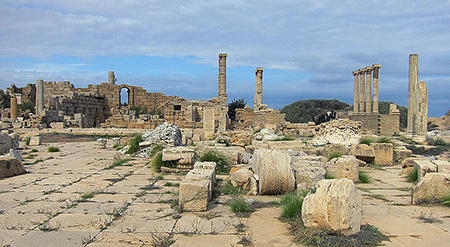
(left) and of three small temples (right) 6
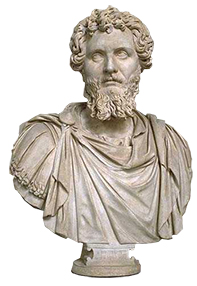
Severus
Sudden decline
Under the influence of one of its citizens, the berber Septimius Severus (193-211 AD), who became the first African Roman Emperor, the city not only got a new large forum, but the extraordinary harbour too enjoyed monumental architectural developments. Besides that, Septimius Severus tried to solve the problem of the continuous flooding caused by the rise of the Libda Wadi. He built a closing quay with warehouses and a control tower, and at the same time he tried to stop the cause of the flooding by changing the course of the Wadi Libda. Unfortunately, it was a move meant well, but for nothing, because by doing so the imposing basin built by Severus became a closed structure exposed to the sea tide. Now the sea brought sand into the basin, which was no longer carried back to sea by the pressure of the water of the Wadi. Due to the new situation the harbour was silted almost immediately and ships were prevented to enter the harbor. Therefore the newly built eastern wharves are extremely well preserved. They were scarcely used.
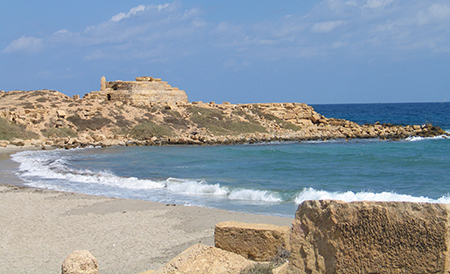
This mistake lead to the decline of Leptis, and the city was not able to import or export goods ever since. People left and the city became a little ghost town under the blowing hot Saharan wind and the mercy of different invaders.
Leptis was discovered in 1915 by the Italians and thanks to them the remains of the port and harbour city are among the best preserved Roman cities outside Italy. On site parts of the Roman harbour can be seen. The light house, the control tower, the warehouses and the thick stone rings to hold the ships while goods were loaded from the long quay are still silent witnesses, ready to tell us what happened to Leptis in two thousand years.
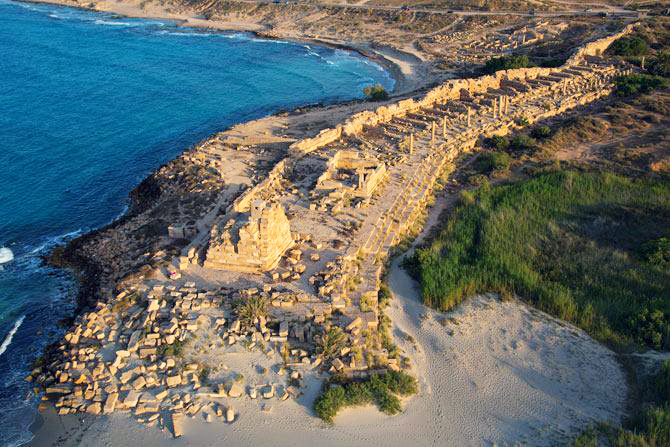
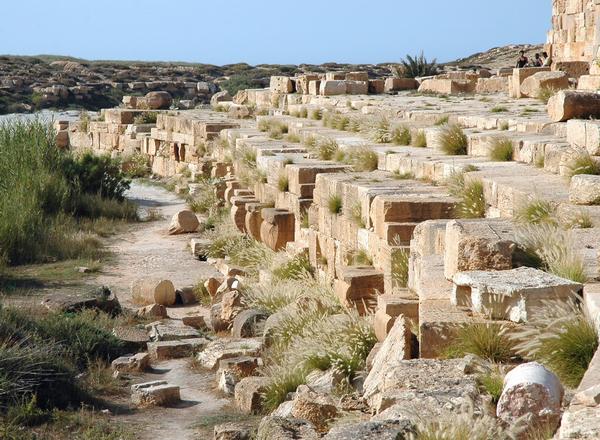
- Notes
- 1: Photos 1 and 4: Jean-Claude Golvin.
- 2: Photo 2: Sasha Coachman.
- 3: Photo 3: The Atlantic ((Alan Taylor), photographer Jason Hawkes. See more aerial pictures on https://www.theatlantic.com/photo/2013/05/over-libyas-coast/100523/.
- 4: Brogan, Wilson, "Lepcis" in: The Oxford Classical Dictionary (4th ed. 2012), p. 821.
- 5: Silvia Bullo: Provincia Africa. Leptis Magna. Pp. 167–171.
- 6: Photo 5: http://romeartlover.tripod.com/Leptis2.htm.
- 7: Photo 7: http://www.roger-pearse.com/weblog/2011/04/30/the-lighthouse-at-leptis-magna/.
- 8: Photo 8: Livius.org.






 We are committed to providing versions of our articles and interviews in several languages, but our first language is English.
We are committed to providing versions of our articles and interviews in several languages, but our first language is English.